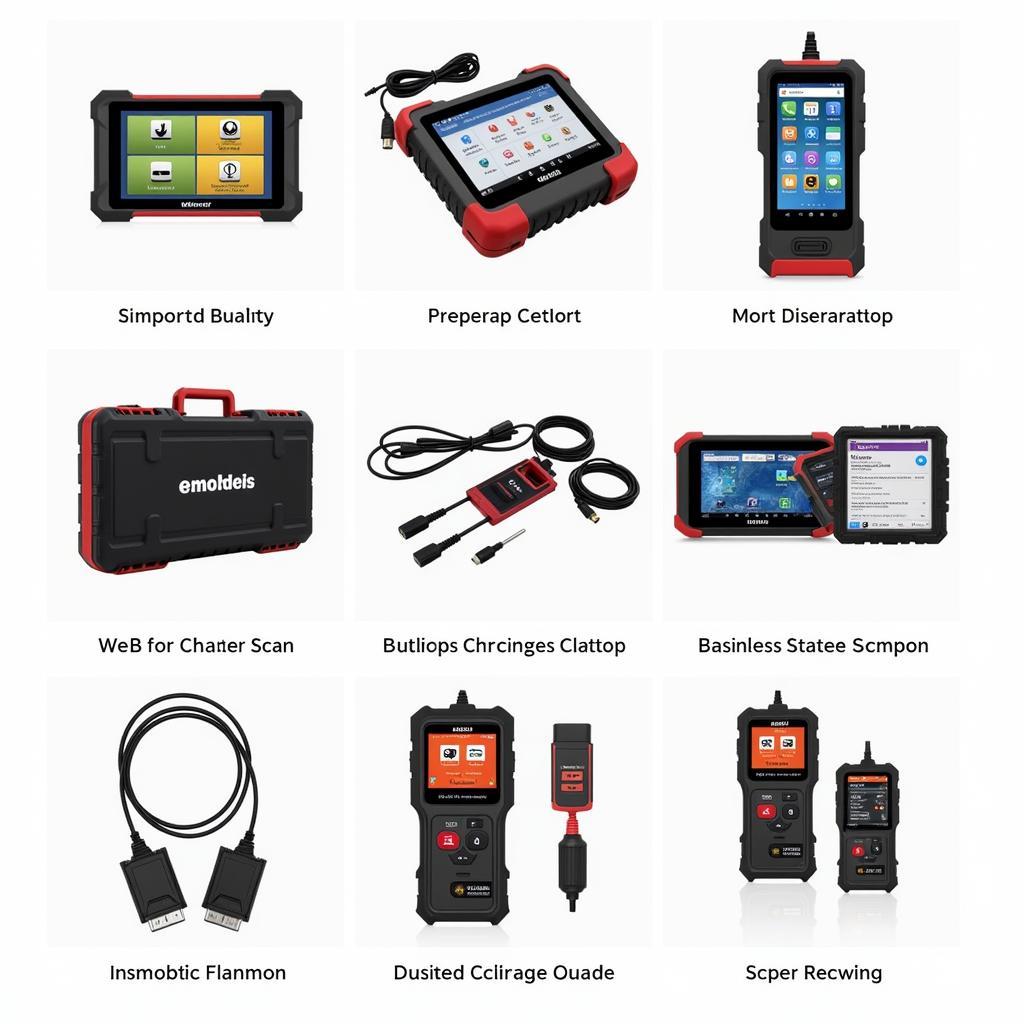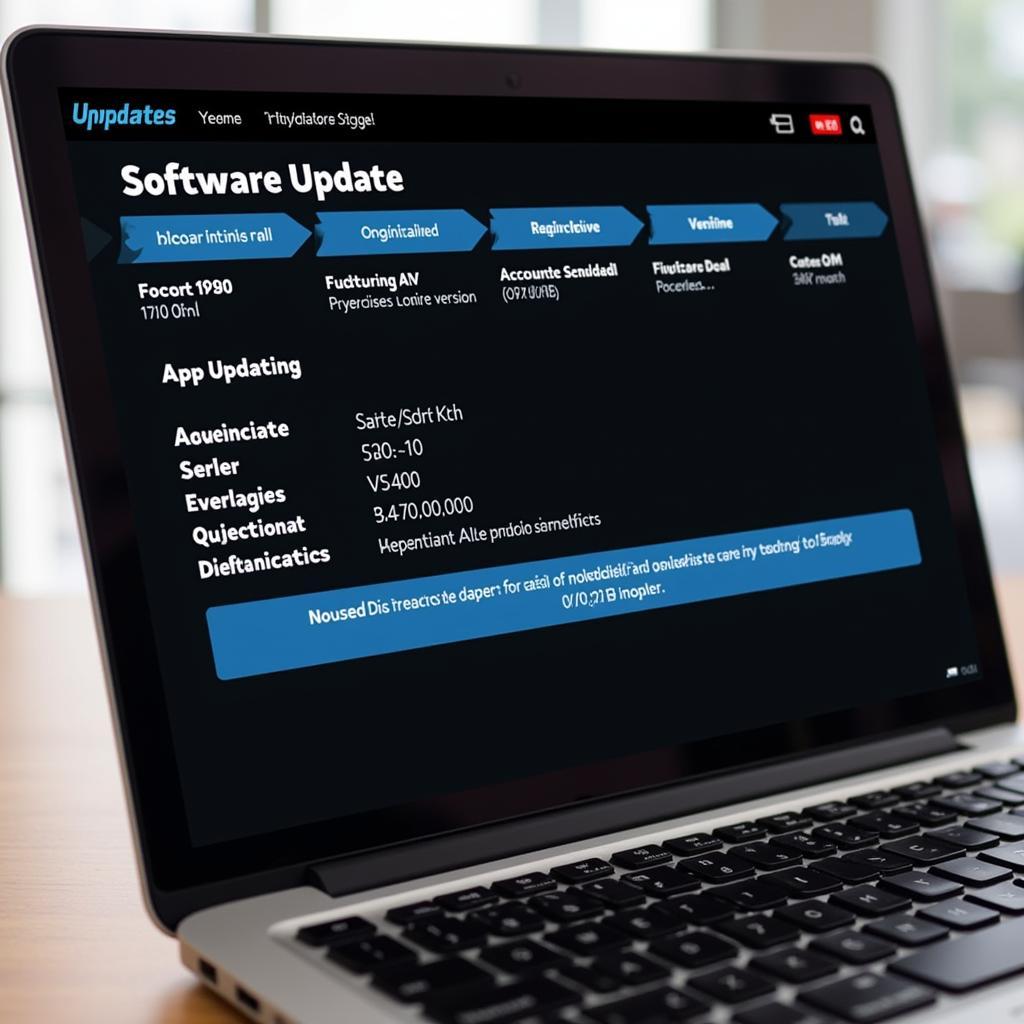Resetting your car computer, also known as the Engine Control Unit (ECU), can be a useful way to troubleshoot various car problems. The ECU is essentially the brain of your car, managing everything from fuel injection to ignition timing. When the ECU encounters an issue, it can trigger warning lights and lead to performance problems. Resetting the ECU can clear these issues and allow it to recalibrate itself. While you can attempt a manual reset, using a scan tool program for laptop provides a more comprehensive solution.
Understanding Your Car Computer and When a Reset is Necessary
Modern vehicles heavily rely on complex electronic systems for optimal performance. At the heart of these systems lies the car computer or ECU. This sophisticated device continuously monitors and adjusts various vehicle functions, such as:
- Engine Performance: Fuel-to-air ratio, ignition timing, and emissions control.
- Transmission Shifting: Gear selection and shift points for smooth operation.
- Safety Systems: Airbag deployment, anti-lock brakes (ABS), and electronic stability control.
- Comfort Features: Climate control, power windows, and infotainment systems.
Over time, your car’s computer can encounter glitches or store error codes due to minor electrical issues, sensor malfunctions, or even a loose battery connection. While some issues resolve themselves, others necessitate a reset.
Signs your car computer might need a reset:
- Check Engine Light: Persistent illumination or frequent recurrence after being cleared.
- Poor Performance: Reduced fuel efficiency, rough idling, or sluggish acceleration.
- Transmission Problems: Harsh shifting, slipping gears, or difficulty engaging gears.
- Electrical Malfunctions: Erratic behavior of lights, windows, or other electronic components.
- Recent Battery Disconnect: Resetting the ECU can help it relearn your vehicle’s settings.
What You Need to Know Before Resetting Your Car Computer
Before attempting to reset your car computer with a scan tool, it’s crucial to consider the following:
- Identifying the Root Cause: Simply resetting the ECU might not permanently solve the underlying problem. If a faulty sensor or component triggers the issue, it will likely resurface.
- Battery Connection: Ensure your car battery is adequately charged and the terminals are clean and tight. A weak battery can disrupt the reset process.
- Vehicle Compatibility: Not all scan tools are compatible with every make and model. Refer to the scan tool’s documentation to ensure it supports your specific vehicle.
- Software Updates: Keep your scan tool’s software up-to-date to access the latest features and vehicle compatibility.
A Step-by-Step Guide to Resetting Your Car Computer With a Scan Tool
Using a scan tool to reset your car computer is a relatively straightforward process. Here’s a general guide to follow:
- Locate the OBD-II Port: This port is usually located under the dashboard on the driver’s side.
- Connect the Scan Tool: Plug the scan tool into the OBD-II port.
- Turn on the Ignition: Turn the key to the “on” position, but don’t start the engine.
- Establish Connection: The scan tool should power on and establish a connection with your car’s computer.
- Access the “Reset” Function: Navigate through the scan tool’s menu to find the option for ECU reset or clear error codes. This option is often labeled as “Erase DTCs” (Diagnostic Trouble Codes).
- Follow On-Screen Prompts: The scan tool will guide you through the reset process, which might involve confirming your actions or entering specific codes.
- Complete the Reset: Once the reset is complete, the scan tool will typically display a confirmation message.
- Disconnect the Scan Tool: Safely disconnect the scan tool from the OBD-II port.
Important Note: Specific steps and menu options may vary depending on the scan tool brand and model. Consult your scan tool’s user manual for detailed instructions tailored to your device.
Choosing the Right Scan Tool for Your Needs
 Selecting a Scan Tool
Selecting a Scan Tool
Selecting the appropriate scan tool can significantly impact your ability to diagnose and resolve car issues. Here’s a breakdown of common scan tool types:
- Basic Code Readers: These affordable tools can read and clear basic engine codes, making them suitable for DIY enthusiasts tackling minor issues.
- OBD-II Scanners: Offering more advanced features than basic code readers, OBD-II scanners provide live data streams, allowing you to monitor sensor readings in real-time.
- Professional-Grade Scan Tools: As the name suggests, these tools are designed for professional mechanics and offer comprehensive diagnostic capabilities, including module programming and bi-directional control over vehicle systems.
Factors to Consider When Choosing a Scan Tool:
- Vehicle Compatibility: Ensure the scan tool supports your car’s make, model, and year.
- Features: Determine the level of diagnostic functionality you require, whether it’s basic code reading, live data streaming, or advanced programming capabilities.
- User Interface: Opt for a scan tool with an intuitive interface and clear display for ease of use.
- Budget: Scan tool prices can range widely, so set a budget that aligns with your needs and usage frequency.
Benefits of Resetting Your Car Computer With a Scan Tool
Utilizing a scan tool to reset your car computer offers several advantages over manual methods:
- Comprehensive Reset: Scan tools communicate directly with the ECU, ensuring a thorough reset that covers all systems.
- Error Code Identification: Unlike a manual reset, scan tools can read and display stored error codes, providing valuable insights into the root cause of the issue.
- Live Data Monitoring: Many scan tools offer live data streams, allowing you to observe sensor readings in real time and verify if the reset resolved the problem.
- Customization Options: Some advanced scan tools allow for customized settings and adjustments to optimize vehicle performance.
“Using a scan tool for ECU resets offers a level of precision and control that manual methods simply cannot match,” says John Smith, Senior Automotive Engineer at ScanToolUS. “The ability to read and clear codes, combined with live data monitoring, empowers car owners and technicians to accurately diagnose and address the underlying causes of vehicle issues.”
Troubleshooting Common Issues When Resetting a Car Computer
While resetting a car computer with a scan tool is generally straightforward, you might encounter a few common issues:
- Scan Tool Connection Problems: Check the OBD-II port and scan tool connector for any damage or debris. Ensure the ignition is turned on.
- Communication Errors: Compatibility issues between the scan tool and your car’s computer can arise. Verify the scan tool supports your vehicle’s make and model.
- Persistent Error Codes: If the error codes reappear after the reset, the underlying problem likely persists. Further diagnosis is necessary.
- Battery Voltage Issues: A weak or unstable battery can interfere with the reset process. Ensure the battery is adequately charged and the terminals are clean and tight.
Tips for Troubleshooting:
- Consult your scan tool’s user manual for specific troubleshooting steps.
- Try using a different OBD-II port if your vehicle has multiple ones.
- Update your scan tool’s software to the latest version.
- If the issue persists, seek assistance from a qualified mechanic.
Conclusion
Resetting your car computer with a scan tool offers a powerful way to address various car problems. By understanding when a reset is necessary, following the correct steps, and using the right scan tool, you can potentially resolve issues and restore your vehicle’s optimal performance. However, always remember that a reset may not permanently address the underlying cause, especially if a faulty component is at fault. If problems persist, seeking professional automotive assistance is always recommended. For expert advice and support, contact ScanToolUS at +1 (641) 206-8880 or visit our office at 1615 S Laramie Ave, Cicero, IL 60804, USA.


